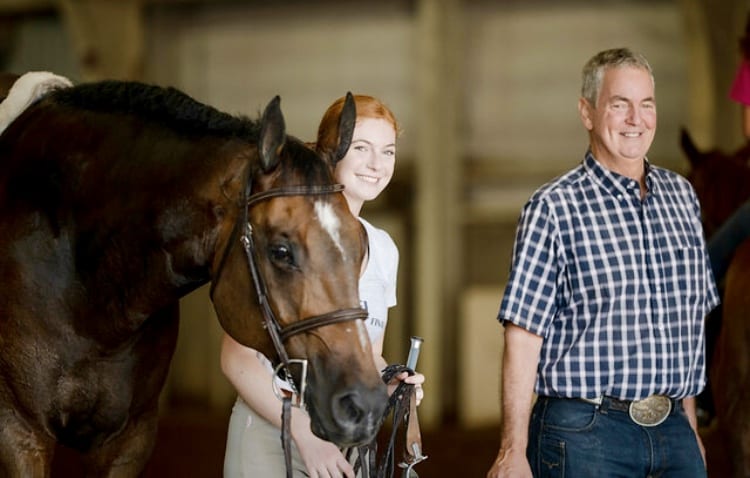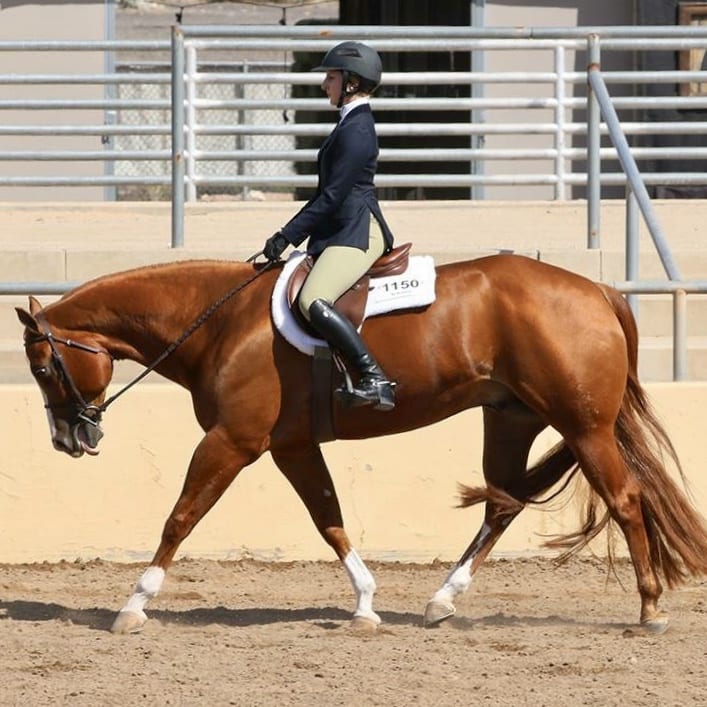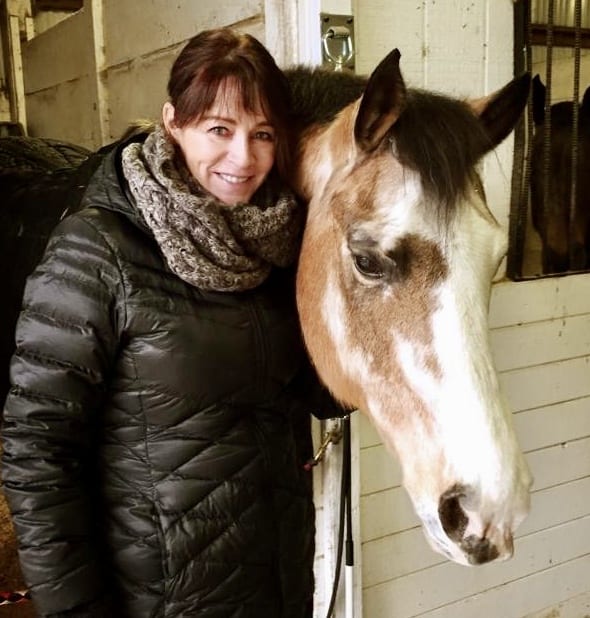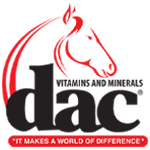A perfect equitation pattern — what comes to mind? The horse and rider working in unison? Sharp, clean maneuvers? A content expression? All of these are pieces of an excellent equitation pattern, but the critical part of a winning equitation pattern is having the perfect horse to complete the pattern. We sat down with Jennifer Welhouse and Shannon McCulloch Bacon to discuss what type of horse will get you to the top.
First, the horse has to have the natural ability to complete the maneuvers in an equitation pattern. Whether it be a turn on the forehand, hand gallop, or sitting trot, they have to be able to do it all.
“My ideal equitation horse has some size, and has a natural ability to shorten and lengthen their strides at all gaits,” Shannon said. “They can be a horse that naturally carries their head level, but I’d ideally have one that’s comfortable sitting above the wither so they can engage their shoulders. A bonus would be a horse that’s smooth in their ‘working trot’ pace, allowing for an overall better picture in the sitting trot. If the horse has these traits, the rest is just training and developing the skill set required for equitation.”
 Equitation is unique because all types of horses can be competitive in it. It’s one class where conformation isn’t a huge factor.
Equitation is unique because all types of horses can be competitive in it. It’s one class where conformation isn’t a huge factor.
“[They should be] a good mover. They don’t have to have the HUS look,” Jennifer said. “I like Nya Kearns’ horse BMQ Stop For Traffic. He has a neck that was set a little higher, which makes sitting properly and the connection to the head better. Equitation is all about connection.”
That connection starts with the rider, pushing the horse onto the bit.
“Your leg, seat, and hand should all be working in connection,” Jennifer (pictured right) said. “The leg and seat move the horse into the hand.”
Pushing the horse into the hand allows for that extra connection that intricate equitation patterns require. If a horse is bothered by being asked to move into the bridle, they might not be successful in equitation.
“The horse needs to be comfortable with a certain amount of confinement, i.e., moving to the bridle. A good equitation horse should easily stay in front of your leg and move to the bridle,” Shannon said. “They can’t be a horse that gets scared when asked to sit in the bridle. The horse needs to move laterally easily, and lengthen and shorten their stride, all while sitting up in the bridle.”
 But, there needs to be a perfect balance of moving into the bridle. A horse pushing too much into the bridle doesn’t paint a pretty picture.
But, there needs to be a perfect balance of moving into the bridle. A horse pushing too much into the bridle doesn’t paint a pretty picture.
“If someone is using too much hand, the horse will look intimidated or behind the vertical. If someone was using too much leg, the horse may be overly forward or look difficult,” Jennifer said. “I say good equitation is like a symphony orchestra. All the instruments have to work together to make it beautiful. One instrument cannot overwhelm the other.”
Practice, Practice, Practice
When it comes to equitation, it’s tricky to hop on a random horse and show. The horse and rider knowing each other’s strengths and quirks can go a long way and figuring those things out starts in practice.
 “To me, it should look as if the horse and rider drew the pattern without ever having to pick their pen up,” Shannon said. “Working in unison can only be achieved by someone who has truly put their work in.”
“To me, it should look as if the horse and rider drew the pattern without ever having to pick their pen up,” Shannon said. “Working in unison can only be achieved by someone who has truly put their work in.”
Equitation maneuvers are complicated, and even more, they need to be clean cut. That sharpness doesn’t happen overnight.
“Commit the same amount of time to it as you do your other classes,” Shannon said. “It takes time and repetition to develop the unique skill sets required for the class; there are no shortcuts on the path to creating an effective equitation horse.”
Not Getting Frustrated
Practicing the maneuvers for equitation is very repetitive and draining. And, as with any class, if you want to be successful in the show pen, you have to put in the work. Having a horse that can handle the rigor of equitation practice is essential.
“The good ones don’t overthink or get easily frazzled,” Jennifer said. “Because you have to practice maneuvers, the horse has to have a good work ethic, but not anticipate.”
This Isn’t Horsemanship
While many horses do compete in both horsemanship and equitation, there must be a clear distinction when showing in each class.
“I want a forward horse, not a western horse with English tack,” Jennifer said.
Not only does this come down to impulse, it also includes the horse’s frame.
“We ride and train equitation horses in an upright frame that isn’t used in any other all-around class,” Shannon said. “What I don’t want to see is a horse that sits straight out from their neck and then curls down into the bridle, looking like a horsemanship horse.”
The perfect equitation horse is unique, just like the class. Equitation allows different types of horses to stand out, but these characteristics are only a few of the things to look for if you want to be successful in equitation.











